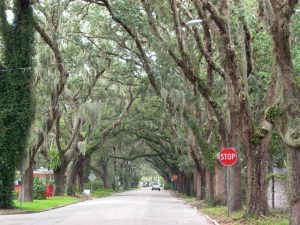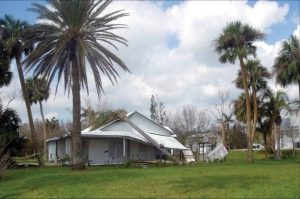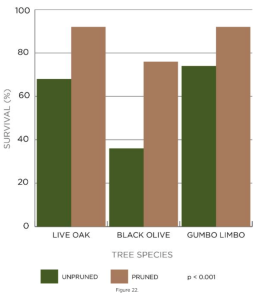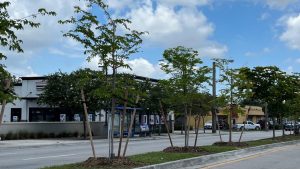The hurricane season ends on November 30, so it is good idea to revisit some tips that can help your landscape be more hurricane resistant when you are designing tree installation projects.
- Right Tree, Right Place
Choose trees that fit well into the landscape. Plant large trees away from homes, power lines and other structures by at least 20-30 feet. This reduces the risk of branches (or trees) falling on a home. It also prevents them from damaging power lines. Large trees such as live oaks need both upward space and ground space (soil volume) to support the heavy tree structure. The more rooting space trees have, the less likely they are to fail.

- Choose Wind-resistant Species
Some trees are more resistant to hurricanes than others. Wind resistance is defined as a tree’s ability to survive (stay standing and alive) the effects of hurricane-force winds, meaning that they are not easily uprooted or broken by winds. For a complete list of wind resistance trees, visit the UF publication, https://edis.ifas.ufl.edu/publication/FR173

- Regular Pruning and Maintenance
Assess your trees, paying close attention to branches. Check for branches that are weakly connected to the stem, such as co-dominant branches. Check the tree for hanging dead branches. Well pruned trees are going to survive better than poorly pruned or unpruned trees. Begin a preventive pruning program as soon as possible for trees.

- Planting in Groups or Masses
If you have enough space, plant trees in groups. Trees in groups survive better than trees growing individually. A group is defined as five or more trees growing within ten feet of another tree, but not in a row. Trees protect each other as well as your property.


Resources
University of Florida Trees and Hurricanes
https://hort.ifas.ufl.edu/treesandhurricanes/
NOAA Hurricane preparedness
https://www.noaa.gov/hurricane-prep
FEMA Ready
National Hurricane Center
Turf Magazine
Hurricane Resistant Landscaping Tips – Turf Magazine
 2
2
